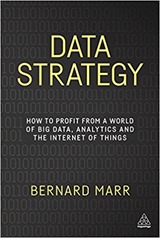 Sprint: How to Solve Big Problems and Test New Ideas in Just Five Days by Jake Knapp with John Zeratsky and Braden Kowitz is another book in my business oriented stream of reading.
Sprint: How to Solve Big Problems and Test New Ideas in Just Five Days by Jake Knapp with John Zeratsky and Braden Kowitz is another book in my business oriented stream of reading.
The sprint is a 5 day programme for planning and running a consumer test of a prototype, starting on Monday with the consumer test on Friday. The programme is laid out in huge detail, even lunch times and break times, with suggested menus are proposed and a maximum size for the sprint team of 7. It is something of the spirit of a “sprint” in the Agile sense but not the same thing.
The book arises from the authors’ experiences at Google Ventures, a venture capital firm, and their work with startups for the most part. I suspect this has a bearing of the cited success of the process, startups are typically compact organisations and typically at the beginning they really need to get something in front of customers. This looks like a great way of doing that, I can see it being more challenging in a mature organisation. Knapp does provide some examples from more mature organisations as well, and mentions at the end that college lecturers have adapted it for courses.
Knapp sets up the sprint as being in contrast to a conventional brainstorming session where everyone has an equal say and no idea is too stupid. The drawback of the brainstorming method is that typically a huge number of ideas are generated in the session, many of questionable quality and then nothing happens afterwards.
Sprint is strong on the idea of a Decider, someone that will make the ultimate decision at points through the programme. The Decider is typically someone like the CEO but if the CEO can’t be available all week then they can delegate to someone else. The Decider can be influenced by spot-votes of other participants but they have the casting vote. Spot-voting is when participants indicate preferences by places sticky spots on items. The higher level implication of the Decider is that there is someone committed to the sprint who has the power to make things happen after the sprint has happened.
The five days of the Sprint are as follows:
- Monday – defining the challenge and coming up with a target;
- Tuesday – come up with solutions;
- Wednesday – plan out the prototype;
- Thursday – build the prototype;
- Friday – Run the consumer test;
My experience of brainstorming is that typically the challenge / target stage is done elsewhere, and the main action is in the “come up with solutions” stage. In this programme the “come up with solutions” part is more of an individual exercise than a group one.
The prototype is planned out as a storyboard of around 15 frames which represent the screens someone might see on a website or app as they conducted the core task. The key initial frame might be a fake news article linking to the prototype website.
The prototype is typically implemented as a facade, it is a fake of a website or app built largely in Keynote (Apple’s presentation software). Initially I bristled at this since my special skill is building fairly functional prototypes in short-order but even I would struggle to do that in one working day. Knapp provides a few of examples where the prototype is something else, they worked with a health clinic in the US which tried out a family friendly clinic arrangement in one of their existing clinics, a pump manufacturer who made the a sales brochure for a new pump rather than a model pump and a robotics company who had the majority of a prototype hotel delivery robot already built.
The commitment of time is large, attendees are expected 10am-5pm all five days, actually 9am-5pm on Friday. There is some scope to allow the Decider to make appearances intermittently, and Monday includes an “Ask the experts” session where outsiders can be brought in for 30 minutes or so. I can see in a larger company that it would be hard to carve out the required time. Also in a larger company it is unlikely you would get a genuine Decider on board, the output of the sprint process would go into competition with other priorities.
The book finishes with a summary of the 5 day programme, a shopping list – indicating the exact number of packs of Post-It notes you should provide and same questions and answers. To a degree I like this, these are my type of people but I can imagine for many the level of detail, control will be oppressive.
Sprint is a quick and easy read, it is chatty in style and is littered with little stories from sprints Knapp and his team have taken part in. I’m probably not in a position where I’d be able to implement the sprint programme in its entirety but provides a lot of food for thought, little ways of changing things.

 Data Strategy
Data Strategy